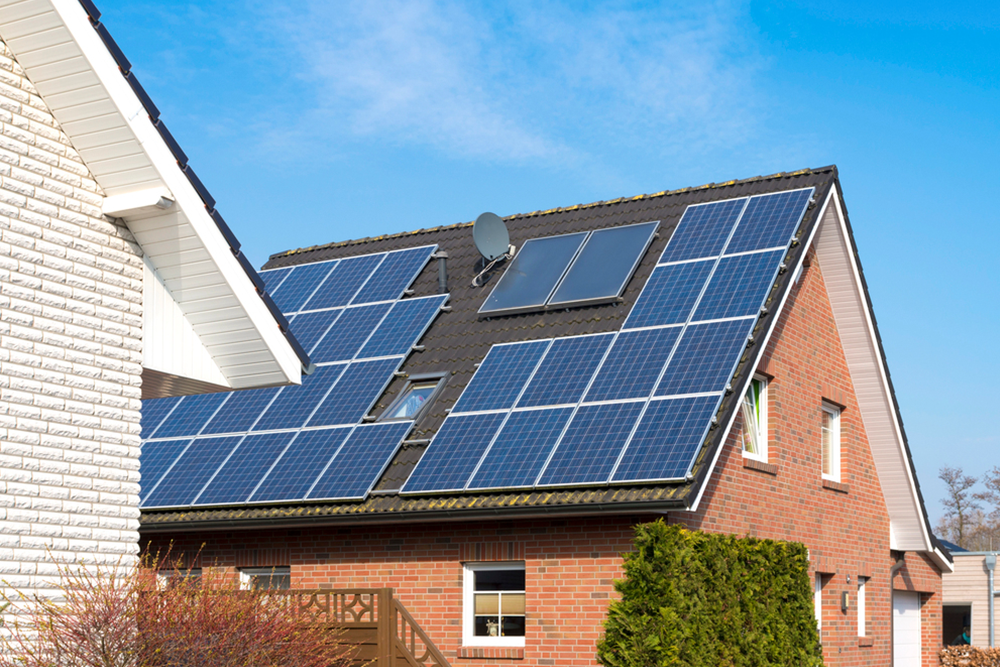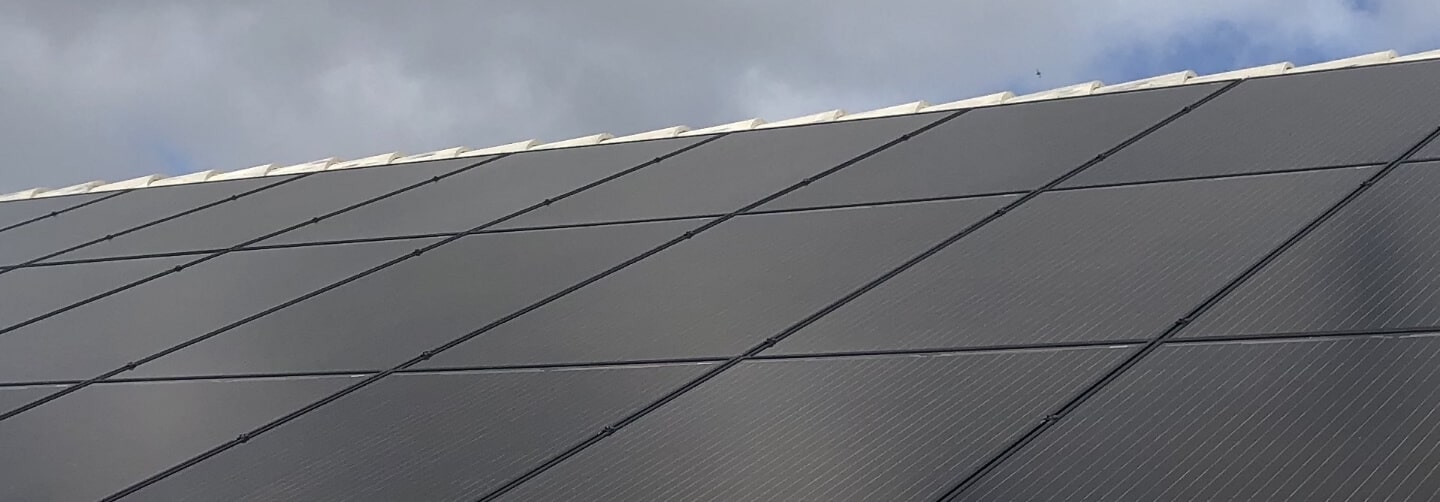Solar Power For Residential Use: A Beginner’s Guide

If you are thinking about adopting solar power for residential use, you are not alone. Solar energy is becoming more popular as homeowners seek to reduce energy bills, contribute to environmental sustainability, and increase their energy independence. Let us explain the basics of solar power, how it works for residential homes, and how to get started with installing a system.
What Is Residential Solar Power?
Solar panels are equipped with photovoltaic (PV) cells that capture sunlight and convert it into direct current (DC) electricity. However, most household appliances require alternating current (AC) electricity, so an inverter is used to change the DC into AC. This transformation allows the energy produced by the solar panels to be used throughout your home, powering everything from lights to appliances efficiently.
A typical residential solar power system consists of solar panels, an inverter, and typically a battery storage system to store excess energy. Installing solar panels on your home’s roof is the most common way to harness solar power, though ground-mounted systems are another option if roof space is limited.
How Does Solar Power Work for Homes?
Solar power systems for residential homes are typically installed on your roof or through a ground-mounted system, depending on your available space and needs. Here is a step-by-step breakdown of how solar power works for residential homes:
- Solar Panels Absorb Sunlight: The solar panels, which are made up of photovoltaic (PV) cells, absorb sunlight. These cells convert sunlight into electricity. The electricity generated is in the form of direct current (DC) power, which is not suitable for household use yet.
- Inverter Conversion: The DC power is then sent to an inverter, which is responsible for converting it into alternating current (AC) power, the type of electricity used in your home. This step is crucial because AC power is what powers all your household appliances, lights, and systems.
- Electricity Use: Once the DC power has been converted to AC, it flows into your home’s electrical panel. From there, it is distributed throughout your home to power various electrical needs, from lights and appliances to your HVAC system.
- Excess Energy: If your solar system generates more electricity than your home needs, the excess energy can be sent back to the grid, a process known as net metering. Alternatively, excess energy can be stored in batteries for later use.
Switching to solar energy reduces your dependence on the grid, lowers electricity costs, and makes your home more energy-efficient.
Benefits of Solar Power for Residential Homes
Switching to solar power offers several advantages for homeowners. These benefits go beyond just saving money on energy bills.
- Cost Savings on Electricity Bills
One of the biggest reasons to switch to solar is the potential to reduce electricity costs. Solar panels generate free energy from the sun, meaning you can offset your monthly electricity bills. Over time, the savings on your utility bills will help pay off the installation costs of the solar system. With proper maintenance, your system will continue to offer free electricity for years.
- Environmental Benefits
Solar energy is a clean, renewable source of power that does not contribute to air pollution or greenhouse gas emissions. By installing solar panels, you help reduce your home’s carbon footprint and contribute to fighting climate change. Using solar power allows homeowners to be more self-sufficient and reduce dependence on non-renewable energy sources like coal and natural gas.
- Increased Home Value
Homes with solar energy systems often see an increase in property value. Solar power is an attractive feature to homebuyers, as it offers energy savings and eco-friendly living. Several studies have shown that homes with solar systems sell faster and at a higher price than those without. Investing in solar panels can not only reduce your bills but also increase the long-term value of your property.
- Energy Independence
When you switch to solar, you become less reliant on the power grid, making your home more resilient to power outages and fluctuations in electricity prices. With additional energy storage options, like solar batteries, you can store excess energy produced during the day and use it at night or during cloudy days, enhancing your energy independence.
Key Components of a Residential Solar System
Understanding the key components of a solar power system helps homeowners make informed decisions about their solar energy setup. Here are the necessary parts of a residential solar system:
- Solar Panels
At the heart of any home solar setup are the panels themselves, which capture the sun’s energy and transform it into usable electricity. Each panel is built with photovoltaic cells that react to sunlight by producing electrical power. Available panel varieties include monocrystalline, polycrystalline, and thin-film, all offering distinct benefits and trade-offs.
Monocrystalline models deliver the highest output per square foot and have a sleek, uniform look, though they often come with a higher price tag. Polycrystalline options strike a balance between cost and performance, making them a popular mid-range choice. Thin-film panels are lightweight and adaptable to unconventional surfaces but generally require more installation area to match the energy output of other types. The decision on which to install should factor in your available roof space, desired efficiency, and budget constraints.
- Inverter
The inverter serves as the system’s translator, taking the direct current (DC) produced by the panels and converting it into alternating current (AC), the form of electricity your household devices use. Common inverter configurations include string inverters, microinverters, and systems with power optimizers.
String inverters connect multiple panels to a single unit, offering simplicity and lower upfront cost. Microinverters attach to each panel individually, enabling better energy harvest in scenarios with partial shading or varied panel angles. Power optimizers pair with string inverters to fine-tune the energy output from each panel, boosting overall system performance.
- Battery Storage (Optional)
While not all solar systems include batteries, having one can help you store excess energy for use at night or during cloudy periods. Battery storage offers energy independence by ensuring you have access to solar power even when the sun is not shining, making your system more reliable and flexible.
Steps to Install Solar Panels for Your Home
If you are considering installing solar power in your home, the process involves several key steps. Understanding these steps helps guarantee a smooth transition to solar energy. Here is an overview of the typical process:
- Initial Consultation
The first step is to contact a trusted solar provider to schedule a consultation. During this consultation, the provider will assess your home’s energy needs, available roof space, and sunlight exposure. This is a crucial step in designing a system that will meet your energy demands. At Solar Energy Solutions of America, we offer a thorough consultation process to make sure that your solar system is tailored to your specific requirements.
- System Design and Proposal
After the consultation, the solar provider will design a custom solar solution for your home. The proposal will include details such as the estimated cost, savings, energy output, and the ideal system size. You will be presented with a comprehensive breakdown of your solar system, which allows you to make an informed decision. The proposal will also address financing options, rebates, and incentives available in your area.
- Installation
Once you approve the proposal, the installation process begins. Solar panels will be mounted on your roof or on the ground, depending on your home’s layout. The inverter and other system components, such as the battery (if applicable), will be installed. Our professional installation team makes sure everything is set up to meet local building codes and regulations.
- System Activation and Inspection
After installation, the system is activated, and the solar setup is connected to the grid (if required). A final inspection is performed to make sure everything is functioning properly, and your system is now ready to start generating solar energy for your home.
Additional Solar Solutions for Residential Homes
Beyond just powering your home, there are other ways to enhance your home’s energy efficiency with solar solutions.
- Solar Pool Heaters
If you have a swimming pool, a solar pool heater can be an excellent addition to your solar system. These heaters use the sun’s energy to keep your pool warm, reducing the need for traditional electric or gas-powered pool heaters. Solar pool heaters are cost-effective, and they help lower your overall energy consumption.
- Solar Attic Fans
In addition to solar panels, solar attic fans can help improve your home’s energy efficiency by cooling your attic during the warmer months. These fans reduce the heat buildup in the attic, which can lower the temperature inside your home and reduce the load on your air conditioning system.
Financial Incentives for Solar Installation
Switching to solar power may seem like a significant investment, but there are financial incentives available to reduce the upfront cost.
- Federal Solar Tax Credit
The federal government offers a tax credit known as the Investment Tax Credit (ITC), which allows homeowners to deduct 26% of the cost of their solar system from their federal taxes. This can significantly reduce the overall installation cost, making solar energy more affordable.
- State and Local Incentives
In addition to the federal tax credit, many states and local governments offer additional rebates, incentives, or tax credits for solar installations. These incentives can further reduce the cost of switching to solar energy.
Switching to solar power for residential use is a great way to reduce energy bills, increase your home’s value, and contribute to environmental sustainability. With benefits like cost savings, energy independence, and environmental impact, it is no wonder that so many homeowners are turning to solar energy.
At Solar Energy Solutions of America, we offer high-quality residential photovoltaic solar electric systems, solar pool heaters, and solar attic fans to help you achieve energy efficiency and sustainability. Contact us today to learn how we can help you make the switch to solar.
